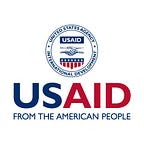Refugees in Kenya
Mega-Camps Develop Mini-Economy for Milling Grains
Kenya hosts nearly half a million refugees and asylum-seekers, primarily from neighboring Somalia and South Sudan — where severe humanitarian crises have forced millions from their homes. Most refugees in Kenya live in the Dadaab and Kakuma refugee camps — two of the world’s largest, where they depend on food assistance — or in the remote Kalobeyei settlement.
USAID provides refugees in these camps with basic foods — typically grains, beans and oil — and specialized nutrition supplements for malnourished women and children. We also fund hot school meals for children, food-for-training programs to help refugees gain valuable job skills, and mobile cash transfers so refugees can buy their own food from local vendors. Our partner, the UN World Food Program (WFP), ensures participating vendors offer affordable foods.
Refugees and Local Kenyans Team Up on Start Ups
USAID always looks for new and innovative ways to tailor food assistance to the local context. In Kenya’s camps, WFP typically provides whole grains, but an assessment showed most refugees prefer milled grains and flour, which take less time and labor to cook.
So refugees and host community members established local milling businesses in Dadaab and Kakuma to grind whole grains to flour. These start-ups have the potential to provide safe, affordable local services, as well as much-needed job opportunities for refugees and local Kenyans.
USAID is doing its part to foster this important new mini-economy by providing refugees with milling vouchers, which allow them to mill about half of their rations of whole grains from 80 camp millers, at a competitive price. The millers receive the electronic transfer immediately — a critical element, as many have limited access to credit — and this helps avoid delays in paying staff and operating costs.
Bottom line? With a little creativity, USAID is providing more than just a nutritious basket of food to refugees. Through the milling voucher, USAID is supporting a new local livelihood activity with the potential to generate jobs and incomes for refugees and host community members alike.
USAID is the largest donor to WFP’s refugee response in Kenya, providing more than $35 million in food assistance last year, including nearly 30,000 metric tons of U.S.-grown, in-kind food.
Follow USAID’s Food for Peace Office at @USAIDFFP.
